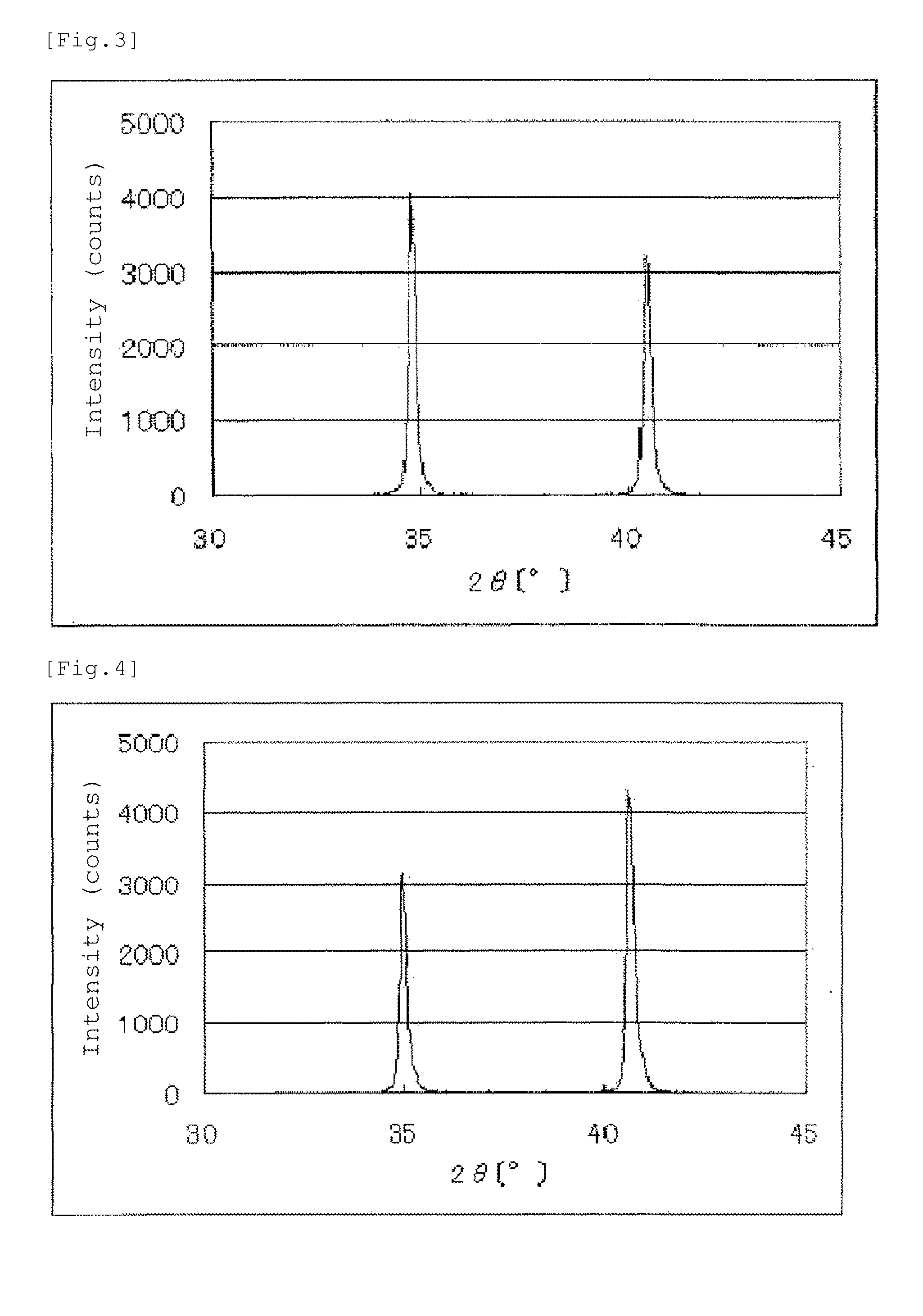Catalyst, process for preparing the same, and uses of the catalyst
- Summary
- Abstract
- Description
- Claims
- Application Information
AI Technical Summary
Benefits of technology
Problems solved by technology
Method used
Image
Examples
example 1
1. Preparation of Catalyst
[0196]600 mg (50 mmol) of carbon (available from Cabot Corporation, Vulcan 72) was sufficiently pulverized and mixed with 2.50 g (20 mmol) of niobium(IV) oxide (NbO2). In a tube furnace, the mixed powder was heated at 1600° C. for 1 hour in a nitrogen atmosphere, whereby 1.89 g of niobium carbonitride was obtained.
[0197]An X-ray powder diffraction spectrum of the resulting niobium carbonitride is shown in FIG. 1. The results of elemental analysis of the resulting niobium carbonitride are set forth in Table 1.
[0198]In a tube furnace, 1.02 g of the resulting niobium carbonitride was heated at 800° C. for 1 hour with flowing argon gas containing oxygen gas of 1% by volume, whereby 1.10 g of a niobium oxycarbonitride (also referred to as a “catalyst (1)” hereinafter) was obtained.
[0199]An X-ray powder diffraction spectrum of the catalyst (1) is shown in FIG. 10. Between diffraction angles 2θ of 33° and 43°, 4 diffraction peaks were observed. The results of elem...
example 2
1. Preparation of Catalyst
[0208]1.83 g of niobium carbonitride was prepared and from 1.02 g of the niobium carbonitride 1.09 g of a niobium oxycarbonitride (also referred to as a “catalyst (2)” hereinafter) was prepared in the same manner as in Example 1, except that the amount of carbon was changed to 480 mg (40 mmol) from 600 mg.
[0209]An X-ray powder diffraction spectrum of the resulting niobium carbonitride is shown in FIG. 2. The results of elemental analysis of the resulting niobium carbonitride are set forth in Table 1.
[0210]An X-ray powder diffraction spectrum of the catalyst (2) is shown in FIG. 11. Between diffraction angles 2θ of 33° and 43°, 4 diffraction peaks were observed. The results of elemental analysis of the catalyst (2) are set forth in Table 2. The BET specific surface area of the catalyst (2) was 2.3 m2 / g.
2. Preparation of Electrode for Fuel Cell
[0211]An electrode (2) for a fuel cell was obtained in the same manner as in Example 1, except that the catalyst (2) ...
example 3
1. Preparation of Catalyst
[0214]2.19 g of niobium carbonitride was prepared and from 1.02 g of the niobium carbonitride 1.09 g of a niobium oxycarbonitride (also referred to as a “catalyst (3)” hereinafter) was prepared in the same manner as in Example 1, except that the amount of carbon was changed to 720 mg (60 mmol) from 600 mg.
[0215]An X-ray powder diffraction spectrum of the resulting niobium carbonitride is shown in FIG. 3. The results of elemental analysis of the resulting niobium carbonitride are set forth in Table 1.
[0216]An X-ray powder diffraction spectrum of the catalyst (3) is shown in FIG. 12. Between diffraction angles 2θ of 33° and 43°, 4 diffraction peaks were observed. The results of elemental analysis of the catalyst (3) are set forth in Table 2. The BET specific surface area of the catalyst (3) was 2.1 m2 / g.
2. Preparation of Electrode for Fuel Cell
[0217]An electrode (3) for a fuel cell was obtained in the same manner as in Example 1, except that the catalyst (3) ...
PUM
| Property | Measurement | Unit |
|---|---|---|
| Temperature | aaaaa | aaaaa |
| Angle | aaaaa | aaaaa |
| Angle | aaaaa | aaaaa |
Abstract
Description
Claims
Application Information
 Login to View More
Login to View More - R&D
- Intellectual Property
- Life Sciences
- Materials
- Tech Scout
- Unparalleled Data Quality
- Higher Quality Content
- 60% Fewer Hallucinations
Browse by: Latest US Patents, China's latest patents, Technical Efficacy Thesaurus, Application Domain, Technology Topic, Popular Technical Reports.
© 2025 PatSnap. All rights reserved.Legal|Privacy policy|Modern Slavery Act Transparency Statement|Sitemap|About US| Contact US: help@patsnap.com



